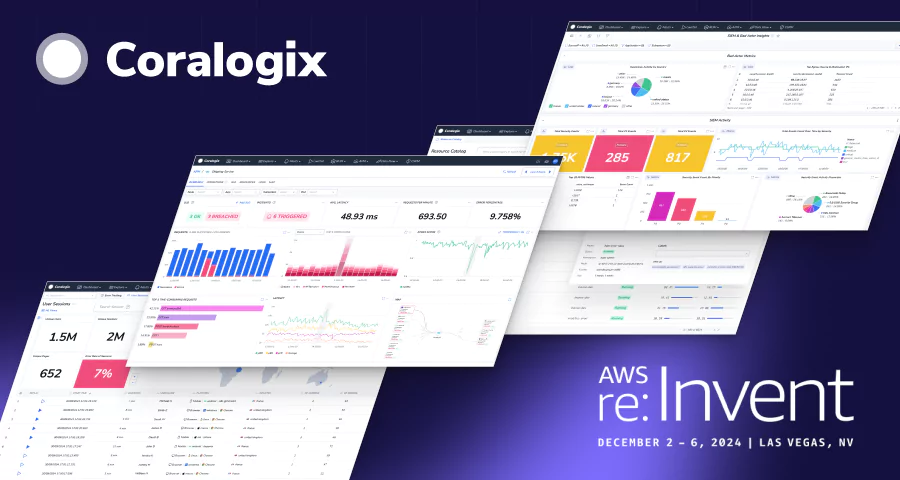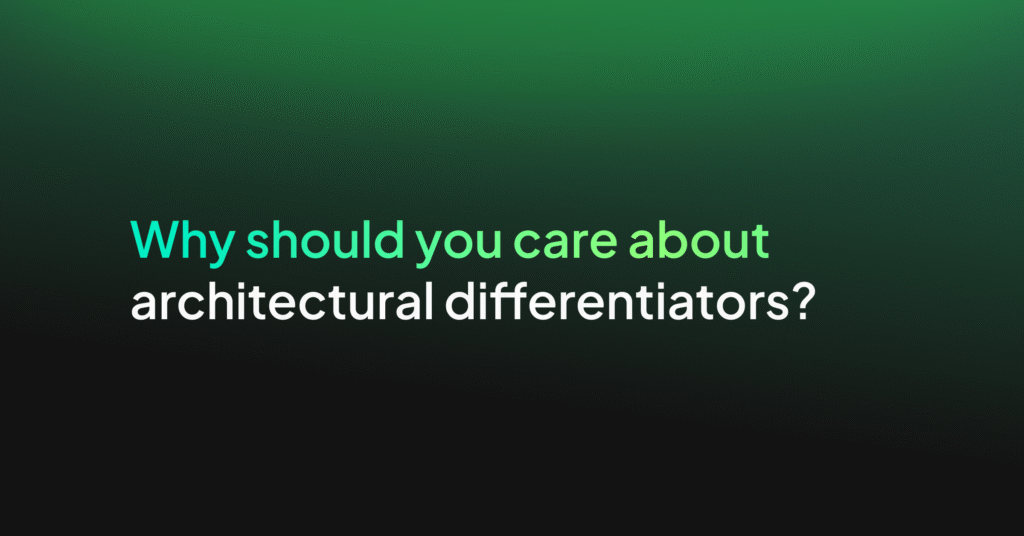Contextual Autocomplete: Why Coralogix is Focused on Developer Productivity
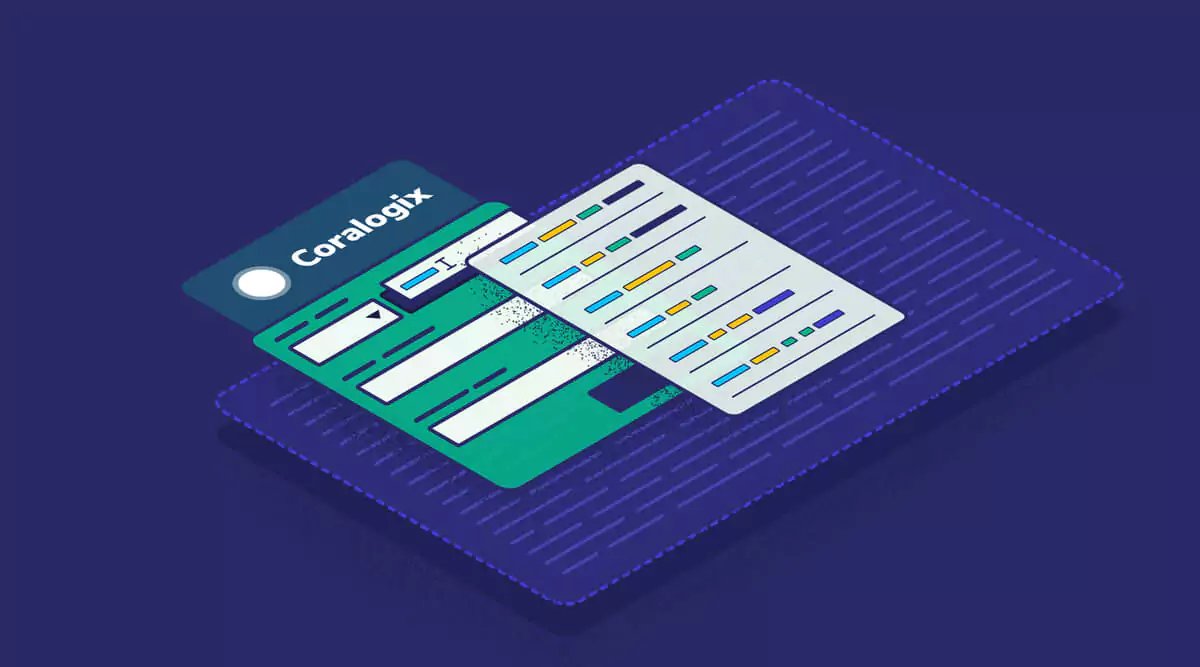
In the observability toolchain, all of our efforts go into data storage and analysis, and the usability of our system becomes a second-class citizen. Autocomplete is a crucial usability feature that significantly improves the developer experience. It is ubiquitous amongst engineering tools from IDEs to CLIs. Autocomplete has long been a feature of many observability tools, but they all miss a crucial detail – optimizing for developer productivity. Let’s discuss how many observability tools don’t focus on this and how Coralogix is paving the way.
How have current solutions missed the mark with autocomplete?
If we begin with Kibana, we can see a very basic autocomplete dialog. However, this doesn’t come with the free version of Kibana and requires a license purchased from Elastic.

Autocomplete across the observability industry looks like this, and while efforts have been made to fix these issues, there is still a long way to go for many providers, both SaaS and open source. In the above screenshot, no attempt has been made to filter these values based on the time range. You’re simply presented with everything, but this isn’t the only way autocomplete has failed in observability.
Three key points that are being missed
There are three key ways in which all observability autocomplete is missing the point right now:
- Fields in logs and metrics have a type – they’re strings, numbers, dates, etc. These can only aggregate these types in specific ways. Simply showing every field, regardless of type, adds unnecessary noise to the UI.
- Observability data is time series, meaning some data is available for specific time ranges and not others. Listing every indexed field to a user doesn’t reflect the availability of information.
- Observability data has a schema. This schema means that if a given metric value is going to be aggregated, there is only a subset of labels on which it can be aggregated. Observability platforms list hundreds of label options, when the actual list is often around a dozen.
Introducing Contextual Autocomplete in Coralogix
At Coralogix, we focus on giving our customers excellent data analysis capabilities. We want to make it simple to discover their data. Logs and metrics typically build up thousands of different fields over time. It’s our job to cut through the noise and give our customers the most precise information we can.
Schema tracking – Showing you only the fields you need to see
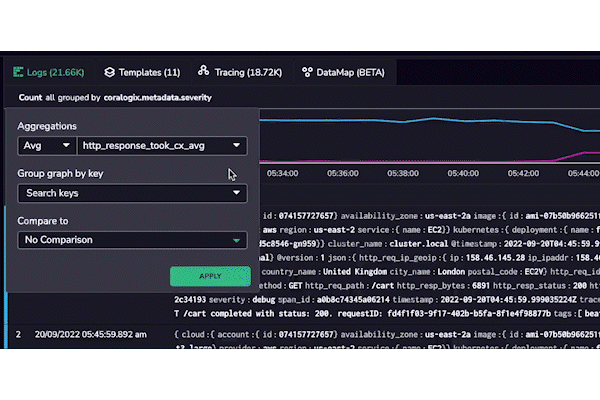
Coralogix won’t bombard a user with every possible label when aggregating their metrics. Instead, it will automatically filter the values based on the labels already associated with their metrics. It does this by tracking the schema for each log and metric and dynamically updating it when new values appear. This means that the user only sees the labels and indexed fields in the schema for that log or metric, which has another layer of complexity.
Time range tracking – Showing you only the fields that exist in your time frame.
The time-series nature of observability data means that a given key may only exist at a certain point in time. If a user queries their data over an hour, there may be more labels or indexed fields than if they query over 15 minutes. This is the nature of logs and metrics.
At Coralogix, we fundamentally understand this problem and only show our users the fields that exist in the timeframe they’re querying, rather than just showing them every detected field. This means that we only display the data that is useful and contextual, removing the noise, minimizing pointless searching, and allowing our users to discover more and more about their data.
Type tracking – Showing you only the data that makes sense
When aggregating fields in your logs, it doesn’t make sense to show the non-numeric fields. At Coralogix, we track the schemas for our customers’ data over time, and we know the availability and type of every variable. Coralogix will only render the most relevant fields when you begin to type.
This type of intelligent autocomplete is akin to the sophistication seen in modern IDEs, where engineers have grown used to this support from their automation. At Coralogix, we are building our interface like an IDE, so engineers can feel at home while they explore their data.
Full stack observability – Bringing your logs, metrics, and traces together
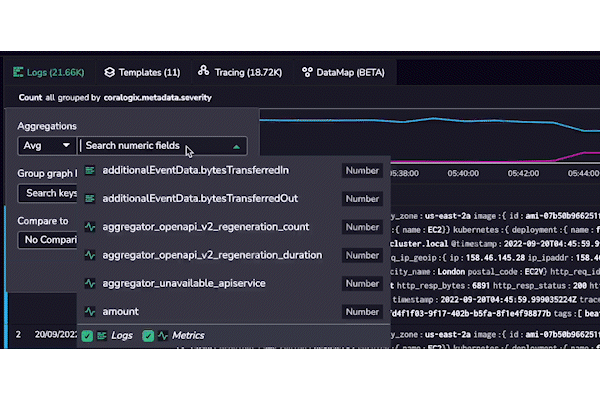
At Coralogix, we don’t believe in information silos. That’s why we will render indexed fields from logs and any available metrics as part of our autocomplete functionality. This is a consistent theme throughout our entire platform – full-stack observability.
It’s the details that matter
At Coralogix, we believe that the details make for an excellent developer experience. Contextual autocomplete is just one of many different features we have made available so that using our platform is as simple as possible, enabling our customers to unlock all of the value hidden away within their logs, metrics, traces, and security data.



